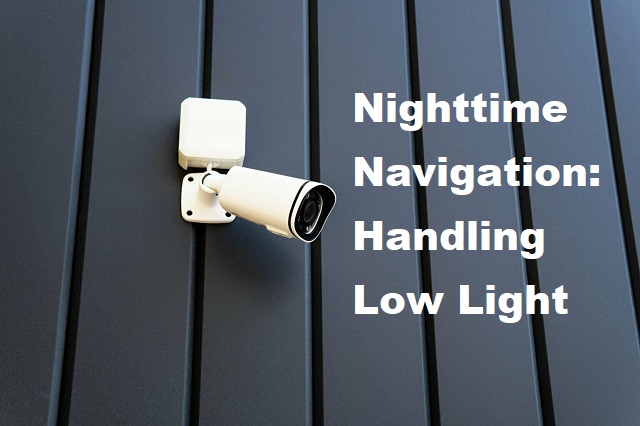As the sun sets and darkness descends, navigating low-light environments becomes a common challenge. Whether it’s walking outdoors, driving at night, or simply moving around the house, reduced visibility can pose risks and discomfort. Handling low-light situations effectively requires adopting specific strategies and utilizing tools to ensure safety, confidence, and ease of movement. Let’s explore practical approaches for safely navigating through low-light conditions, empowering individuals to handle darkness with confidence.
Understanding Low-Light Challenges
Low-light environments present various challenges due to reduced visibility:
- Impaired Depth Perception: Difficulty in accurately judging distances and perceiving depth.
- Limited Peripheral Vision: Reduced ability to see objects or obstacles in the peripheral field.
- Slower Reaction Times: Diminished ability to react quickly to changes or hazards in the environment.
Low-light environments present various challenges due to reduced visibility:
- Impaired Depth Perception: Difficulty in accurately judging distances and perceiving depth.
- Limited Peripheral Vision: Reduced ability to see objects or obstacles in the peripheral field.
- Slower Reaction Times: Diminished ability to react quickly to changes or hazards in the environment.
1. Proper Lighting:
- Quality Lighting: Ensure proper indoor and outdoor lighting to illuminate pathways, hallways, and stairs.
- Motion-Activated Lights: Install motion-sensor lights to automatically illuminate specific areas when movement is detected.
2. Use of Personal Lighting Devices:
- Flashlights or Headlamps: Carry portable lighting devices to enhance visibility while walking or performing tasks in low-light areas.
- Reflective Gear: Wear reflective clothing or accessories to increase visibility to others, especially while walking or cycling in the dark
3. Optimal Eye Health:
- Regular Eye Check-ups: Maintain good eye health by scheduling regular eye exams to address any vision impairments.
- Adaptation Period: Allow your eyes time to adjust to low-light conditions when transitioning from bright to dark environments.
4. Safe Driving Practices:
- Clean and Adjusted Headlights: Ensure vehicle headlights are clean, properly aligned, and in good working condition for maximum visibility.
- Reduce Glare: Adjust rearview mirrors and dim dashboard lights to reduce glare while driving at night.
5. Enhanced Home Safety:
- Clear Pathways: Keep walkways clear of clutter or obstacles to prevent tripping or falling indoors.
- Nightlights: Place nightlights in bedrooms, hallways, or bathrooms for safer navigation during the night.
6. Technological Aids:
- GPS and Navigation Apps: Utilize navigation apps with night mode features for easier readability and reduced eye strain during night travel.
- Night Vision Cameras: Install night vision cameras for enhanced security and surveillance around the home.
7. Adaptation and Caution:
- Slow and Steady Movements: Navigate low-light environments cautiously, maintaining slower movements to avoid accidents.
- Use Handrails and Support: When available, use handrails or support structures for stability and balance, especially on stairs or uneven surfaces.
Challenges and Considerations
- Individual Variations: Personal factors such as age, vision health, or existing medical conditions may impact adaptability to low-light conditions.
- Technology Reliability: Dependence on electronic devices or technology for navigation in low-light environments may have limitations or malfunctions.
- Environmental Changes: Natural factors like weather conditions or environmental obstructions may further reduce visibility in low-light situations.
Investing in a Security Camera System for Low-Light Environments
Security camera systems can be vital tools in enhancing safety and security in low-light environments. These systems often come equipped with features specifically designed to handle low-light conditions, providing clear, usable footage even in the absence of robust external lighting. Let’s delve into aspects to consider when investing in a security system for low-light settings:
- Night Vision Capabilities: Choose a security camera system with night vision capabilities. These systems use infrared technology to illuminate dark areas, allowing clear visibility even in complete darkness.
- Image Quality: Look for cameras with high-resolution sensors that can capture detailed images in dim conditions. The higher the resolution, the better the image quality, even in low-light settings.
- Motion Detection: Opt for cameras with motion detection capability. Such cameras can alert you to movement in their field of vision, providing an extra layer of security during nighttime hours.
- Field of View: Consider the camera’s field of view. Wide-angle lenses can cover larger areas, reducing the number of cameras needed and enhancing overall visibility.
- Durability: Ensure that the cameras are durable and weather-resistant, especially if they are to be installed outdoors, where they will be exposed to varying weather conditions.
- Data Storage and Accessibility: Consider how the video footage is stored and accessed. Many modern systems offer cloud storage and the ability to access footage remotely via smartphone apps, enhancing convenience and ease of use.
Successfully handling low-light environments requires a combination of preparedness, adaptability, and caution. By implementing appropriate lighting, utilizing personal tools, maintaining optimal eye health, and adopting safe practices, individuals can navigate darkness confidently and safely.
While navigating low-light conditions presents challenges, the adoption of practical strategies and tools empowers individuals to handle darkness with greater ease and confidence. By prioritizing safety, utilizing available resources, and exercising caution, individuals can navigate through low-light environments, ensuring a sense of security and independence. By embracing adaptive techniques and incorporating safety measures into daily routines, handling low-light situations becomes less daunting, allowing individuals to move with assurance and comfort in the darkness—a testament to resilience and adaptability in navigating life’s varying conditions.






